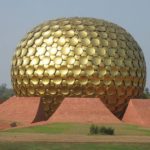The Rabbi at Trump’s Inauguration
Moshe Chaim Hier (b. 1939) was born in New York to Polish-Jewish immigrants. At the age of 23, he was ordained as an Orthodox rabbi and moved to Vancouver where he soon took charge of its Congregation Schara Tzedeck. In 1977, Hier moved to Los Angeles and established the Simon Wiesenthal Center, a non-profit dedicated to “confronting antisemitism, hate and terrorism, promoting human rights and dignity, standing with Israel, defending the safety of Jews worldwide, and teaching the lessons of the Holocaust for future generations.” The Simon Wiesenthal Center is now one of the most well-known Jewish organizations in the world, with offices in Toronto, Jerusalem, Paris, Buenos Aires, and across the US. Its Museum of Tolerance welcomes 350,000 visitors a year, and its library holds over 50,000 important volumes. Hier also established the Moriah Films company, which has produced over a dozen films focusing on Jewish history and the Holocaust. Two of these won Academy Awards for Best Documentary. This makes Hier the only rabbi to ever win an Oscar. He is also the only rabbi to be a member of the Academy of Motion Picture Arts and Sciences. Meanwhile, Hier established Los Angeles’ Yeshiva University High Schools and was its dean for many years. He is currently working on a $200 million project to build a Museum of Tolerance in Jerusalem, to open next year, and producing his 16th film, about the life of Shimon Peres. Most recently, Rabbi Hier gave a blessing at President Donald Trump’s inauguration. This made him only the second Jewish religious leader in history to speak at a presidential inauguration, and the first Orthodox rabbi to ever do so. He has been ranked as the most influential rabbi in America, and was once described as being “one phone call away from almost every world leader, journalist, and Hollywood studio head.”
Words of the Week
The bond that has united the Jews for thousands of years and that unites them today is, above all, the democratic ideal of social justice coupled with the ideal of mutual aid and tolerance among all men.
– Albert Einstein





